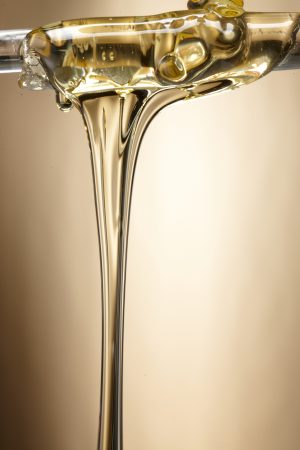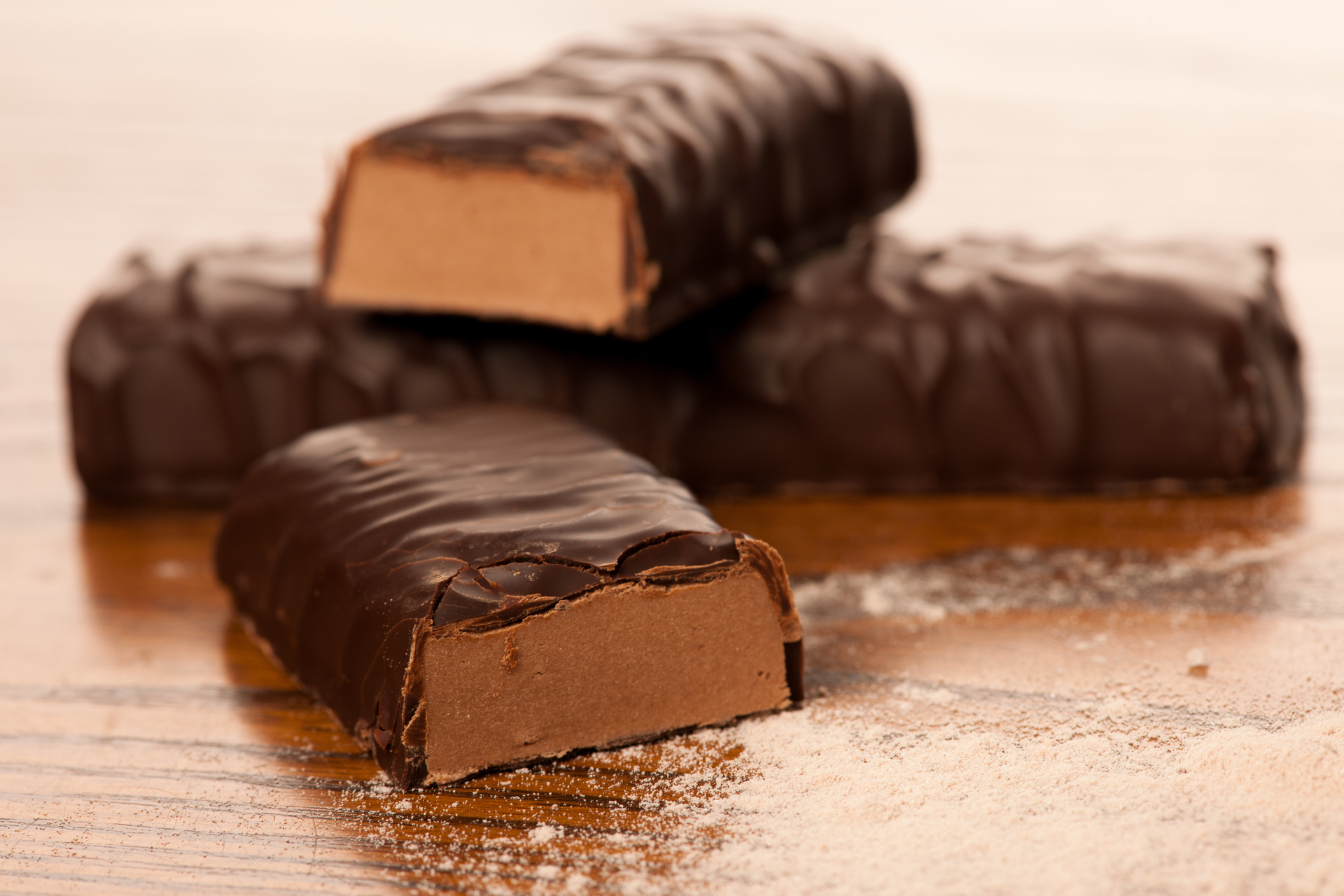Product development • Isomaltooligosaccharides (IMO) are found naturally in many foods, but may also be added to some products as bulk and to give sweetness. IMO itself is a dietary fibre, but is sold as syrup or powder which also contains sugars and other energy-giving carbohydrates. Despite this, IMO may be of use in sugar reduction. Let’s learn more about IMO's path from the cassava root to sweetened fibres.
Isomaltooligosaccharides is a long and complicated name for dietary fibres found naturally in sourdough bread, soy sauce, miso and kombucha, but also extracted industrially from starch. We use isomaltooligosaccharides made from tapioca – starch from cassava. In this article, we will be following the isomaltooligosaccharides route from cassava to our sweetened fibres – Eureba.
Confusion about isomaltooligosaccharides (IMO)
Isomaltooligosaccharides – or IMO as it is often abbreviated – meet the EU’s definition of dietary fibre (see aside). By definition, IMO does not degrade during digestion, but reaches the large intestine largely unaffected.
Nevertheless, there are blog posts, popular science articles, and even scientific articles, which claim the opposite. How is it that?
This is mainly because the name is used incorrectly about products that certainly contain IMO, but also a lot of other non-fibre carbohydrates.
The proportion of other carbohydrates ranges from 10 up to 50 percent. It is this fraction that, during digestion, breaks down into glucose, which raises blood sugar and contributes calories, while the isomaltooligosaccharides pass unchanged.
We will return to these products at the end of this article. But let’s start from the beginning – with the cassava root, which is the source of IMO that we use in our sweetened fibres.
Cassava
Cassava, also known as manioc and yuca, belongs to the euphorbias. It is a plant family consisting of about 4,000 herbs, shrubs and trees. They grow mainly in the warmest areas of the earth. There are only a handful of wild species in Northern Europe.
Cassava can grow up to five meters tall, and bloom with pink flowers.
But it is not the cassava’s flowers that are interesting, but its large, tuberous roots, which can weigh up to ten kilos. It is a staple food for millions of people – making cassava one of the world’s most important crops.
Today, cassava is the main staple food for 800 million people.
Cultivating cassava
Cassava is a tropical plant that thrives best when it is warm and sunny.
During May and June, cassava is planted by taking cuttings that are put down into the soil at an interval of half a meter.
If the plants get heat, sun and water, the roots can be harvested after 6-7 months. In colder or drier weather, it takes longer. From 10 to 12, up to 18 months.
Most often, the cassava roots is harvested by simply pulling them up by hand.

Preparation of cassava root
Cassava is toxic – like most euphorbias. One of its most infamous relatives is ricin – whose seeds are so toxic that a single one is enough to kill a human.
But cassava is not that toxic. One should, however, not eat the root as it is; it contains the two substances linamarin and linamarase which form prussic acid – hydrogen cyanide – in contact with each other.
Therefore, cassava is prepared by peeling and mashing it, so that the two substances come in contact with each other and form hydrogen cyanide. Then the water-soluble poison is leached out. In traditional preparation, liquid is squeezed out of the mash after being soaked in water for several hours. This is repeated several times. In industrial preparation, the mash is cooked instead. As an extra precaution, the pressed or cooked mash can also be heated to allow residues of hydrogen cyanide to evaporate.
Preparation of tapioca

The poison-free cassava mash can be used to produce manioc flour and tapioca.
Traditionally, manioc flour is made by dissolving the cassava mash in water and compressing it into tubes with small holes for water to seep out. The dry substance that remains in the tube is manioc flour.
Tapioca is produced from the water which is squeezed out of the tube. It contains a lot of starch. By heating up the liquid, water is allowed to evaporate, while the starch forms jelly-like lumps. It’s tapioca.
In industrial production, the cassava is dissolved in water and left to rest in sediment pools. Then residual plants fall to the bottom. On top of it, pure starch is settled. And on top of that comes the manioc flour. When water has been removed, manioc flour can be scooped up, and then starch. The starch is then heated in large pans, forming tapioca.
From tapioca to IMO
Isomaltooligosaccharides (IMO) is made from starch that can come from wheat, barley, oats, peas, beans, lentils, potatoes, rice – and not least tapioca.
Manufacturing begins with dissolving tapioca (or other starch) in water and adding acid or enzymes, or both, and heating the mixture. Then the starch, which is long chains of glucose molecules, is broken up into smaller chains, which in turn is broken up into even smaller and so on. This is called hydrolysis, and results in a syrup consisting of glucose, maltose (two linked glucose molecules), maltooligosaccharides (3-10 linked glucose molecules) and maltodextrin (11+ linked glucose molecules).
The goal is to get as many short malt oligosaccharides as possible and as little of the rest as possible. For example, yeast can be added to feast on glucose, to get rid of it.
But even without glucose, the syrup is a calorie bomb that raises blood sugar levels. This is because the chains of glucose molecules are held together by a bond that is rapidly broken up in the digestive system. These bonds are called α-(1→4).

The trick that creates fibres
The trick is to transform the α-(1→4) bonds, which the body quickly breaks down, with α-(1→6) bonds, which the body has much harder to crack.
The digestive system manages to split carbohydrates with a single α-(1→6) bond, but not carbohydrates with multiple. The latter pass unaffected straight through to the large intestine. Therefore, no glucose is released, which would otherwise raise blood sugar levels and provide extra calories.
The conversion number is made by an enzyme that changes bonds from α-(1→4) to α-(1→6) but leaves the carbohydrates unchanged otherwise. Therefore, the converted carbohydrates get the prefix iso which means equal in Latin.
This is how maltooligosaccharides become isomaltooligosaccharides.
And since isomaltooligosaccharides are found naturally in foods, have 3-10 glucose molecules and are not broken down by digestion, they are by definition dietary fibres.
IMO syrup is not just IMO

The syrup that results from the manufacturing method described above is often referred to as fibre syrup, IMO syrup or in short IMO. But that is misleading; the syrup contains more than just IMO.
Firstly, far from all carbohydrates is converted. Simply out, there are leftovers of short chains with the α-(1→4) bonds, that can be cleaved to give calories and affect blood sugar levels.
Second, some of the maltose have been converted to isomaltose, which has only one α-(1→6) bond, which can be broken up by the digestive system.
In other words, IMO syrup does not just contain IMO. Commercially available IMO syrups can consist of up to 50 percent sugars and other ”fast carbohydrates”.
But there are also IMO syrups with higher IMO concentration – up to 98 percent.
IMO syrup can also be dried to a powder. Since the only thing that has been removed is water, it too contains many other things that are not truly IMO.
IMO in Eureba
IMO has some sweetness in itself, and together with the sugars and other carbohydrates that inevitably ”is included in the purchase”, the sweetness can approach 60 percent of the sweetness of regular sugar.
The inherent sweetness of IMO makes it interesting as an ingredient in sweetened fibres, which we develop and market under the trademark EUREBA®.
Sweetened fibres is a homogeneous composition of dietary fibre, high-intensity sweetener and other ingredients. One kilo of sweetened fibres replaces one kilo of sugar in recipes without having to change production. The purpose is to reduce calories and the effect on blood sugar without changing taste, mouthfeel and texture.
Protein bars and similar products are good examples where sweetened fibres with IMO may be considered.
Finally
If you’ve read this far, you might be interested in learning more about Eureba. You might wonder if we have a ready-made solution for your specific needs. (The probability is good. If not, we will produce one for you.) If so, do not hesitate to contact us. We are happy to answer questions. Call us on telephone number +46 8 613 28 88 or send us en email at [info@bayn.se
Please, share this article if you liked it.
[et_social_share]







